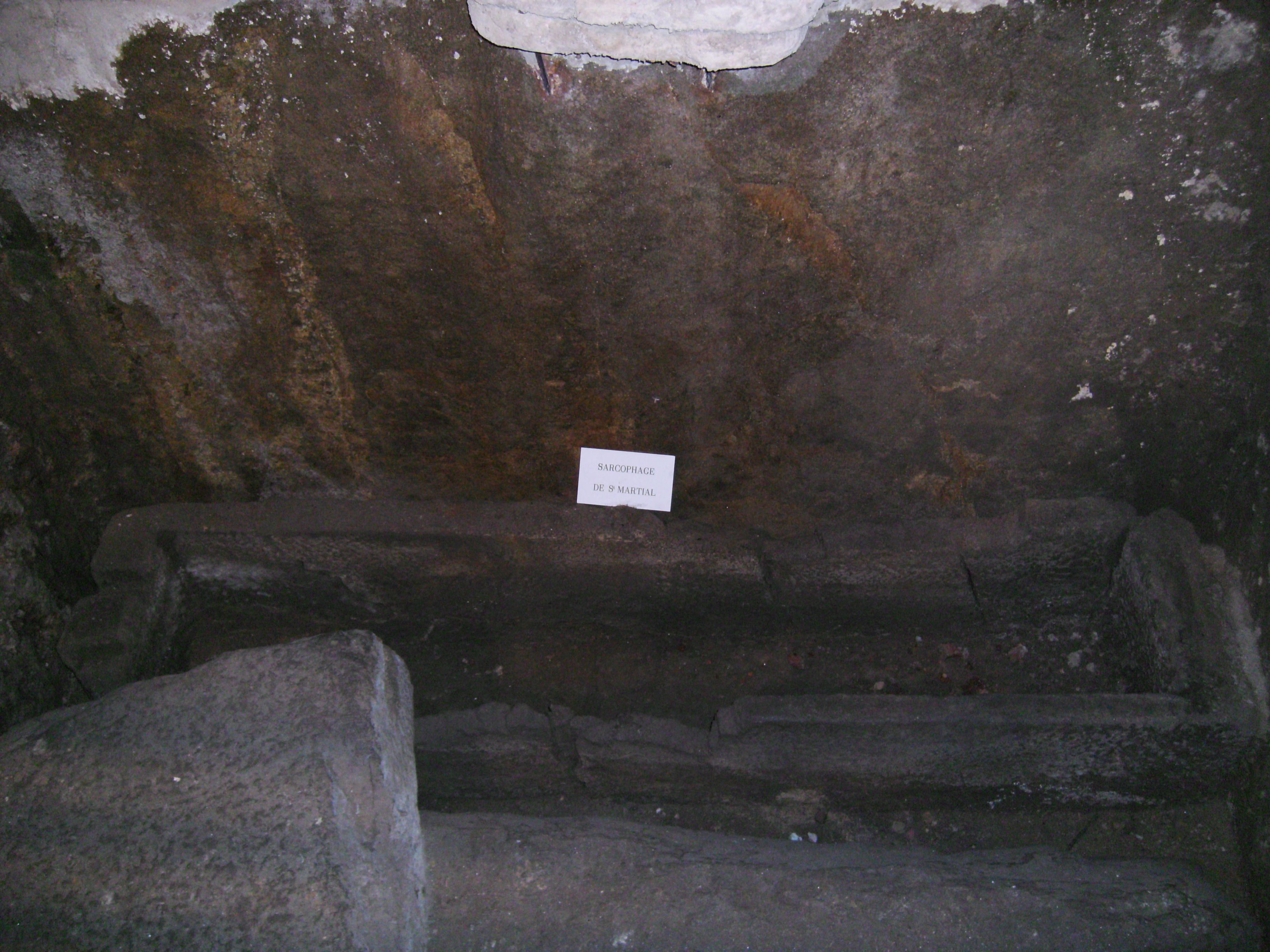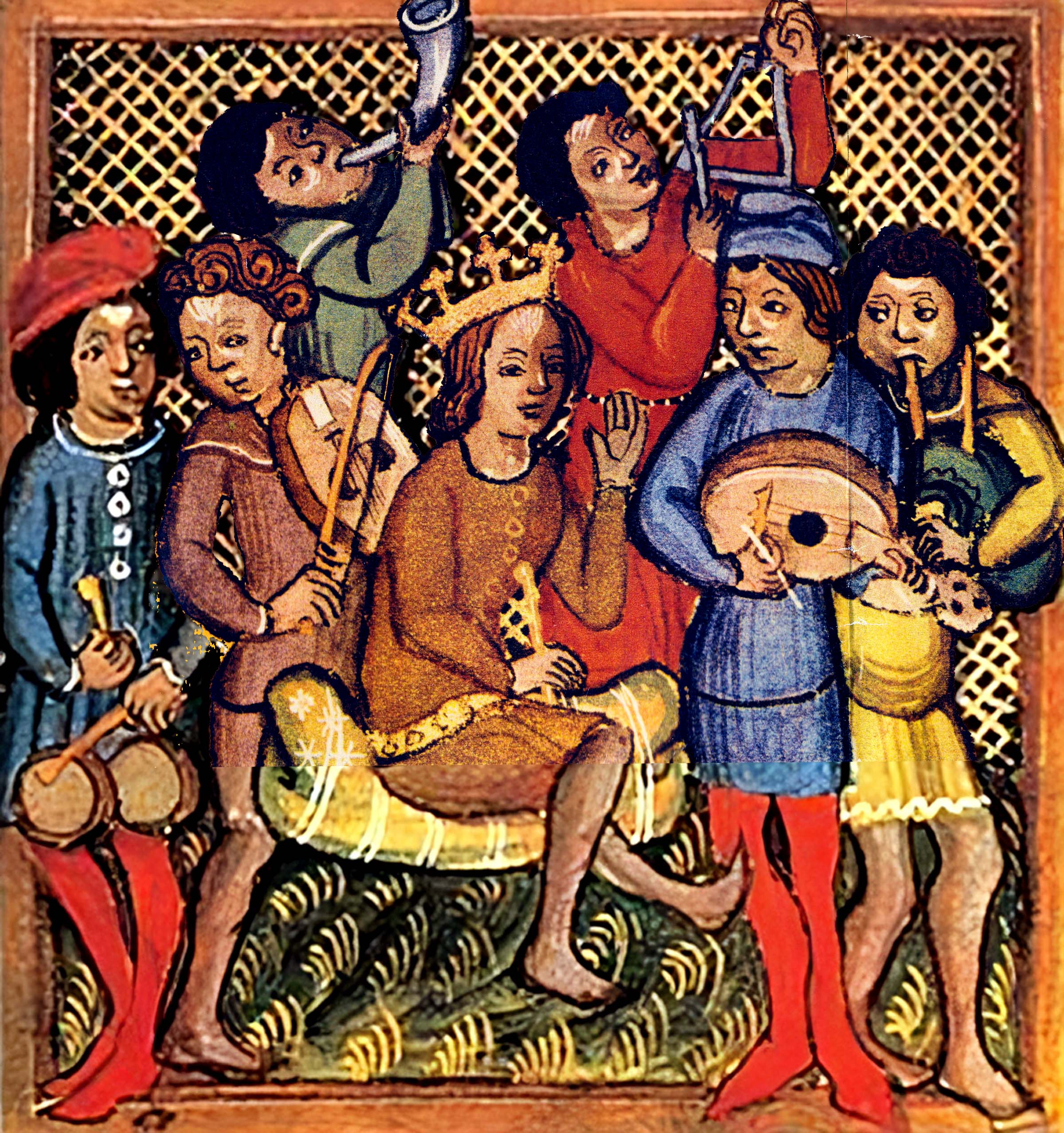|
Saint-Martial-de-Limoges
The Abbey of Saint Martial (french: Abbaye Saint-Martial, Limoges; Limousin: ''Abadiá de Sent Marçau de Limòtges'') was a monastery in Limoges, France, founded in 848 and dissolved in 1791. The buildings were razed at the beginning of the 19th century. The only remaining part is the 10th-century crypt, which was rediscovered in 1960, and which contains the tomb of Saint Martial, the first bishop of Limoges, and also that of Saint Valerie of Limoges, another, possibly legendary, early martyr. Origins The origins of the abbey lie in the graveyard outside the original Roman settlement of Augustoritum. This is the site of the Place de la République, at the commercial heart of modern Limoges. The cemetery was the reputed burial place of early Christian martyrs, including Saint Martial, the first bishop of Limoges. This evolved into a place of pilgrimage in Merovingian times. By the 6th century, according to Gregory of Tours, there was a funerary chapel above Saint Martial's t ... [...More Info...] [...Related Items...] OR: [Wikipedia] [Google] [Baidu] |
Saint Martial
Saint Martial (3rd century), called "the Apostle of the Gauls" or "the Apostle of Aquitaine", was the first bishop of Limoges. His feast day is 30 June. Life There is no accurate information as to the origin, dates of birth and death, or the acts of this bishop. According to Gregory of Tours, during the time of the Emperors Decius Pope Fabian sent out seven bishops from Rome to Gaul to preach the Gospel: Gatien to Tours, Trophimus to Arles, Paul to Narbonne, Saturnin to Toulouse, Denis to Paris, Austromoine to Clermont, and Martial to Limoges. He succeeded in converting the inhabitants to Christianity, and his memory has always been venerated there.Clugnet, Léon. "St. Martial." The Catholic Encyclopedia Vol. 9. New York: Robert Appleton Company, 1910. 10 January 2016 Abbey ...[...More Info...] [...Related Items...] OR: [Wikipedia] [Google] [Baidu] |
Cluny Abbey
Cluny Abbey (; , formerly also ''Cluni'' or ''Clugny''; ) is a former Benedictine monastery in Cluny, Saône-et-Loire, France. It was dedicated to Saint Peter. The abbey was constructed in the Romanesque architectural style, with three churches built in succession from the 4th to the early 12th centuries. The earliest basilica was the world's largest church until the St. Peter's Basilica construction began in Rome. Cluny was founded by Duke William I of Aquitaine in 910. He nominated Berno as the first abbot of Cluny, subject only to Pope Sergius III. The abbey was notable for its stricter adherence to the Rule of St. Benedict, whereby Cluny became acknowledged as the leader of western monasticism. In 1790 during the French Revolution, the abbey was sacked and mostly destroyed, with only a small part surviving. Starting around 1334, the Abbots of Cluny maintained a townhouse in Paris known as the Hôtel de Cluny, which has been a public museum since 1843. Apart from the name ... [...More Info...] [...Related Items...] OR: [Wikipedia] [Google] [Baidu] |
Tonary
A tonary is a liturgical book in the Western Christian Church which lists by incipit various items of Gregorian chant according to the Gregorian mode (''tonus'') of their melodies within the eight-mode system. Tonaries often include Office antiphons, the mode of which determines the recitation formula for the accompanying text (the psalm tone if the antiphon is sung with a psalm, or canticle tone if the antiphon is sung with a canticle), but a tonary may also or instead list responsories or Mass chants not associated with formulaic recitation. Although some tonaries are stand-alone works, they were frequently used as an appendix to other liturgical books such as antiphonaries, graduals, tropers, and prosers, and are often included in collections of musical treatises. Function and form Tonaries were particularly important as part of the written transmission of plainchant, although they already changed the oral chant transmission of Frankish cantors entirely before musical no ... [...More Info...] [...Related Items...] OR: [Wikipedia] [Google] [Baidu] |
Plainchant
Plainsong or plainchant (calque from the French ''plain-chant''; la, cantus planus) is a body of chants used in the liturgies of the Western Church. When referring to the term plainsong, it is those sacred pieces that are composed in Latin text. Plainsong was the exclusive form of Christian church music until the ninth century, and the introduction of polyphony. The monophonic chants of plainsong have a non-metric rhythm. Their rhythms are generally freer than the metered rhythm of later Western music, and they are sung without musical accompaniment. There are three types of chant melodies that plainsongs fall into, syllabic, neumatic, and melismatic. The free flowing melismatic melody form of plainsong is still heard in Middle Eastern music being performed today. Although the Catholic Church (both its Eastern and Western halves) and the Eastern Orthodox churches did not split until long after the origin of plainsong, Byzantine chants are generally not classified as plainson ... [...More Info...] [...Related Items...] OR: [Wikipedia] [Google] [Baidu] |
Adémar De Chabannes
Adémar de Chabannes (988/989 – 1034; also Adhémar de Chabannes) was a French/Frankish monk, active as a composer, scribe, historian, poet, grammarian and literary forger. He was associated with the Abbey of Saint Martial, Limoges, where he was a central figure in the Saint Martial school, an important center of early medieval music. Much of his career was spent copying and transcribing earlier accounts of Frankish history; his major work was the ''Chronicon Aquitanicum et Francicum'' (''Chronicle of Aquitaine and France''). He is well-known for forging a ''Vita'', purportedly by Aurelian of Limoges, that indicated Saint Martial was one of the original apostles. Though he successfully convinced the local bishop and abbot of its authenticity, the traveling monk Benedict of Chiusa exposed his forgery and damaged Adémar's reputation. Life and career Besides perhaps Guillaume de Machaut, more is known about the life of Adémar than any other medieval composer. Part of this w ... [...More Info...] [...Related Items...] OR: [Wikipedia] [Google] [Baidu] |
Saint Martial School
The Saint Martial School was a medieval school of music composition centered in the Abbey of Saint Martial, Limoges, France. Most active from the 9th to 12th centuries, some scholars describe its practices, music, and manuscripts as 'Aquitanian'. It is known for the composition of tropes, sequences, and early organum. In this respect, it was an important precursor to the Notre Dame School. Adémar de Chabannes and his nephew Roger de Chabannes were important proponents of this school. History of the Abbey Saint Martial de Limoges Many of the modern musicological studies concerning a "Saint Martial School" focus on four manuscripts with remarkably innovative compositions for the 12th century. It is often assumed that these fragments derived from different Southern French monasteries, despite the lack of cantor attributions in the rubrics. However, Sarah Fuller has suggested that this may not be the case, discussing the "myth of a Saint Martial school", where she suggests that ... [...More Info...] [...Related Items...] OR: [Wikipedia] [Google] [Baidu] |
Medieval Music
Medieval music encompasses the sacred and secular music of Western Europe during the Middle Ages, from approximately the 6th to 15th centuries. It is the first and longest major era of Western classical music and followed by the Renaissance music; the two eras comprise what musicologists generally term as early music, preceding the common practice period. Following the traditional division of the Middle Ages, medieval music can be divided into Early (500–1150), High (1000–1300), and Late (1300–1400) medieval music. Medieval music includes liturgical music used for the church, and secular music, non-religious music; solely vocal music, such as Gregorian chant and choral music (music for a group of singers), solely instrumental music, and music that uses both voices and instruments (typically with the instruments accompanying the voices). Gregorian chant was sung by monks during Catholic Mass. The Mass is a reenactment of Christ's Last Supper, intended to provide a ... [...More Info...] [...Related Items...] OR: [Wikipedia] [Google] [Baidu] |
Secular
Secularity, also the secular or secularness (from Latin ''saeculum'', "worldly" or "of a generation"), is the state of being unrelated or neutral in regards to religion. Anything that does not have an explicit reference to religion, either negatively or positively, may be considered secular. Linguistically, a process by which anything becomes secular is named ''secularization'', though the term is mainly reserved for the secularization, secularization of society; and any concept or ideology promoting the secular may be termed ''secularism'', a term generally applied to the ideology dictating secularism, no religious influence on the public sphere. Definitions Historically, the word ''secular'' was not related or linked to religion, but was a freestanding term in Latin which would relate to any mundane endeavour. However, the term, In saecula saeculorum, saecula saeculorumsaeculōrumbeing the genitive plural of saeculum) as found in the New Testament in the Vulgate translation (cir ... [...More Info...] [...Related Items...] OR: [Wikipedia] [Google] [Baidu] |
Church Of St
Church may refer to: Religion * Church (building), a building for Christian religious activities * Church (congregation), a local congregation of a Christian denomination * Church service, a formalized period of Christian communal worship * Christian denomination, a Christian organization with distinct doctrine and practice * Christian Church, either the collective body of all Christian believers, or early Christianity Places United Kingdom * Church (Liverpool ward), a Liverpool City Council ward * Church (Reading ward), a Reading Borough Council ward * Church (Sefton ward), a Metropolitan Borough of Sefton ward * Church, Lancashire, England United States * Church, Iowa, an unincorporated community * Church Lake, a lake in Minnesota Arts, entertainment, and media * '' Church magazine'', a pastoral theology magazine published by the National Pastoral Life Center Fictional entities * Church (''Red vs. Blue''), a fictional character in the video web series ''Red vs. Blue'' ... [...More Info...] [...Related Items...] OR: [Wikipedia] [Google] [Baidu] |





.jpg)
